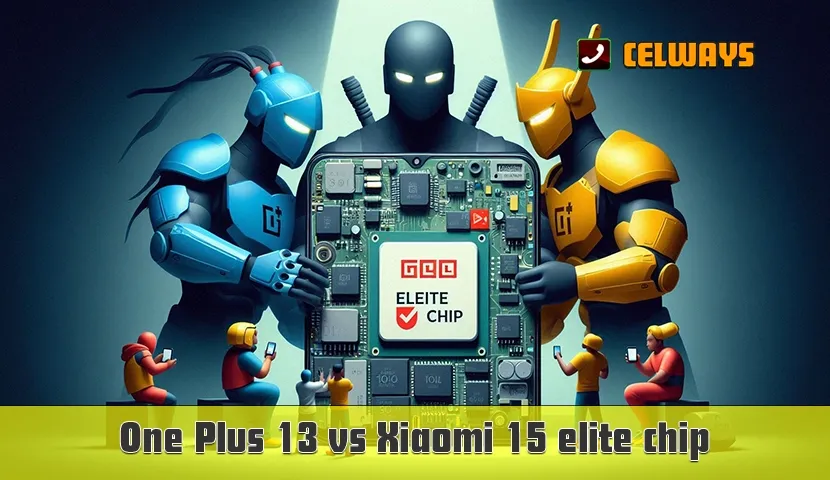One Plus 13 vs Xiaomi 15. The cell phone world is humming with fervor over the launch of the OnePlus 13 and the Xiaomi 15, two leader gadgets competing for matchless quality in 2024. At the center of this competition are their world-class chipsets, which convey pivotal execution, artificial intelligence capacities, and networks. How about we jump into how these gadgets stack facing each other as far as their chipset power.
World class Chipset Confrontation.
OnePlus 13: Qualcomm Snapdragon 8 Gen 3.
The OnePlus 13 is fueled by the most recent Snapdragon 8 Gen 3 chipset from Qualcomm. Known for its industry-driving execution, the Snapdragon 8 Gen 3 is based on a state of the art 4nm interaction, which conveys more effectiveness and power than its ancestor.
Key highlights include:
One Plus 13 vs Xiaomi 15 Computer based intelligence Handling: A devoted man-made intelligence motor that improves execution in all cases, from quicker picture handling to continuous language interpretation.
Designs Power: The Adreno 750 GPU carries progressed gaming encounters with smoother outline rates and backing for beam following, making portable gaming outwardly staggering.
Performing multiple tasks: With up to 40% quicker computer chip speeds, the Snapdragon 8 Gen 3 effectively handles extreme performing multiple tasks, allowing clients to switch between applications without slack.
5G Availability: It upholds 5G mmWave, guaranteeing bursting quick download and transfer speeds, ideal for the people who depend on quick organizations.
Xiaomi 15 - MediaTek Dimensity 9300.
On the opposite side, the Xiaomi 15 takes an alternate course with its MediaTek Dimensity 9300 chipset, which is likewise based on a 4nm design. MediaTek's lead chip has turned into areas of strength for Qualcomm, known for offsetting crude execution with effectiveness.
Key highlights include:
Gaming-Prepared Illustrations: The Immortalis-G720 GPU rivals the Snapdragon's Adreno GPU, offering smooth, vivid involvement with gaming and AR/VR applications with power-productive execution.
Energy Effectiveness: One of the champion highlights of the Dimensity 9300 is its energy-saving abilities. It figures out how to run weighty applications without overheating or depleting the battery exorbitantly, making pursuing it a strong decision for clients who focus on life span.
5G Flexibility: The chipset upholds worldwide 5G groups, guaranteeing an extensive variety of inclusion, and succeeds in power-effective 5G sub-6GHz organizations for regular clients.
Simulated intelligence and AI.
The two gadgets center vigorously around simulated intelligence to raise client experience. The OnePlus 13's man-made intelligence motor works on facial acknowledgment, camera execution, and framework advancements in light of client conduct. The Xiaomi 15 counters with man-made intelligence upgraded camera programming, which changes settings consequently for ideal photographs and video quality.
Designs and Gaming.
As far as gaming, the Snapdragon 8 Gen 3 in the OnePlus 13 starts to lead the pack with prevalent GPU execution, pushing super high casing rates and reasonable delivering. Be that as it may, the Xiaomi 15's Dimensity 9300 is a real pro, furnishing a reasonable gaming experience in light of energy effectiveness, making it ideal for longer gaming meetings without overheating.
5G and Network.
The two telephones support the most recent in 5G innovation, with the OnePlus 13 zeroing in on quicker mmWave 5G for metropolitan clients who need maximum velocities, and the Xiaomi 15 giving more solid and boundless sub-6GHz 5G, which is perfect for clients in regions with less thick 5G inclusion. Both chipsets offer quick, stable availability for streaming, downloads, and internet gaming.
Which One is Appropriate for You?
Assuming crude power and top-of-the line gaming are your needs, the OnePlus 13 with its Snapdragon 8 Gen 3 is the better decision, particularly on the off chance that you want mmWave 5G for top-level rates.
Nonetheless, assuming you're searching for a telephone that adjusts proficiency, man-made intelligence execution, and battery duration, the Xiaomi 15 with its Dimensity 9300 chipset is the more balanced choice, particularly for power-cognizant clients.
Concolutions about elite chip feature in the news.
The OnePlus 13 and Xiaomi 15 are endlessly neck with regards to execution, yet their first class chipsets take special care of marginally unique client needs. The Snapdragon 8 Gen 3 in the OnePlus 13 gives an edge in crude speed and gaming, while the Dimensity 9300 in the Xiaomi 15 sparkles with computer based intelligence proficiency and energy-saving capacities. Your decision at last relies upon what makes the biggest difference — power or proficiency. Before working with our celways phone repair tips, tircks and other diagoneses. Please read our privacy policy and other leagel documents.










0 Comments